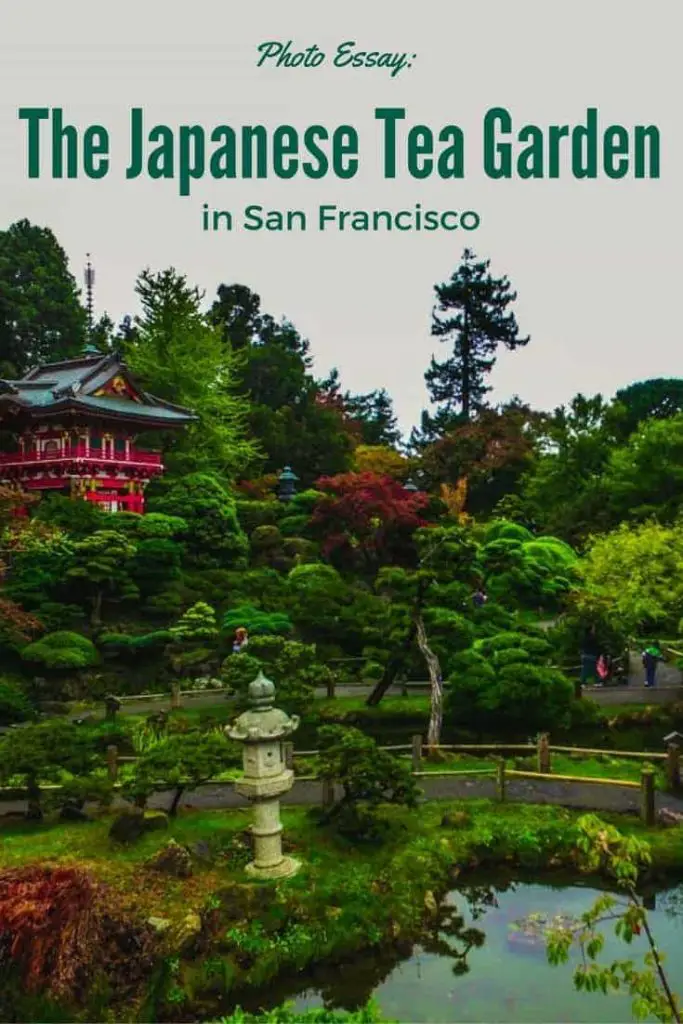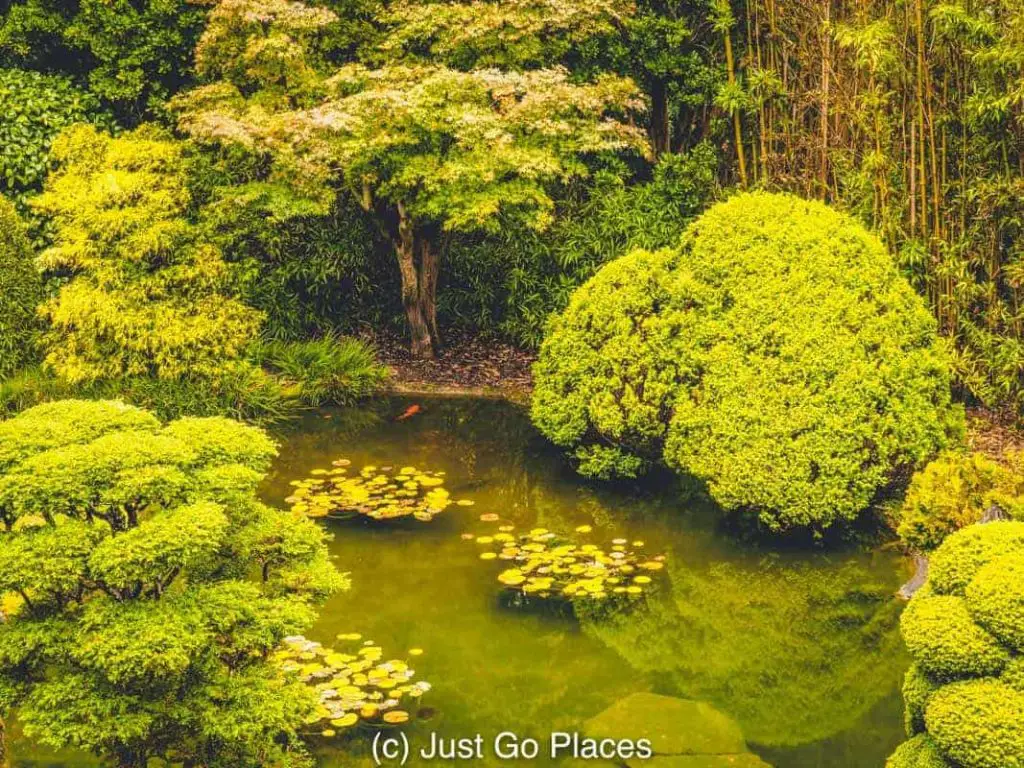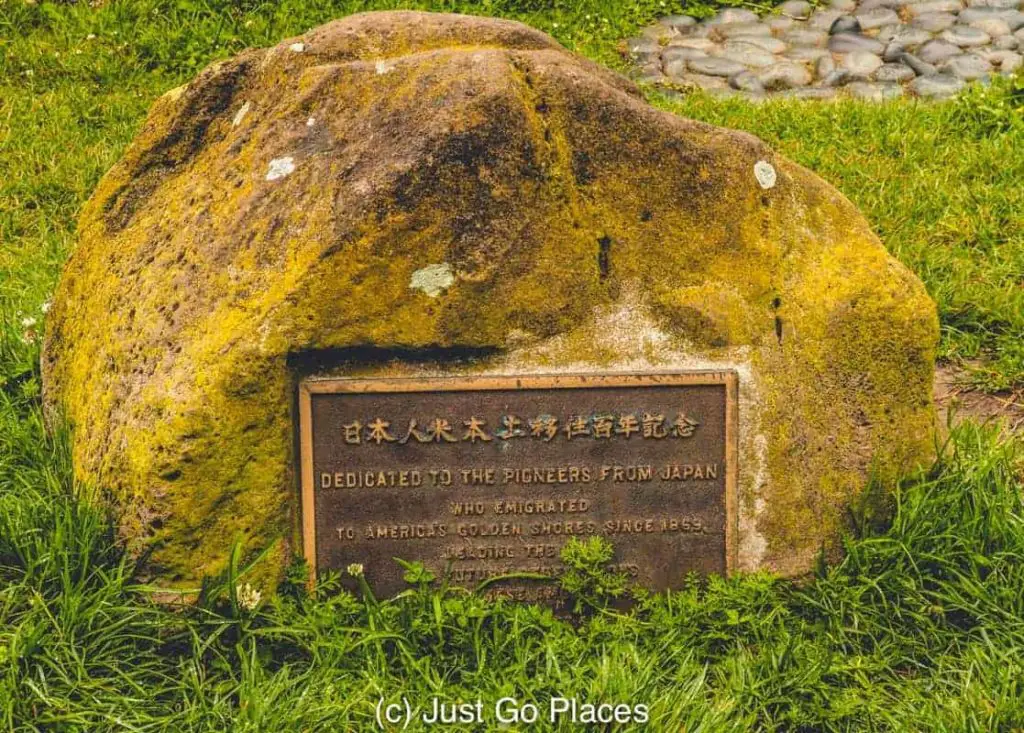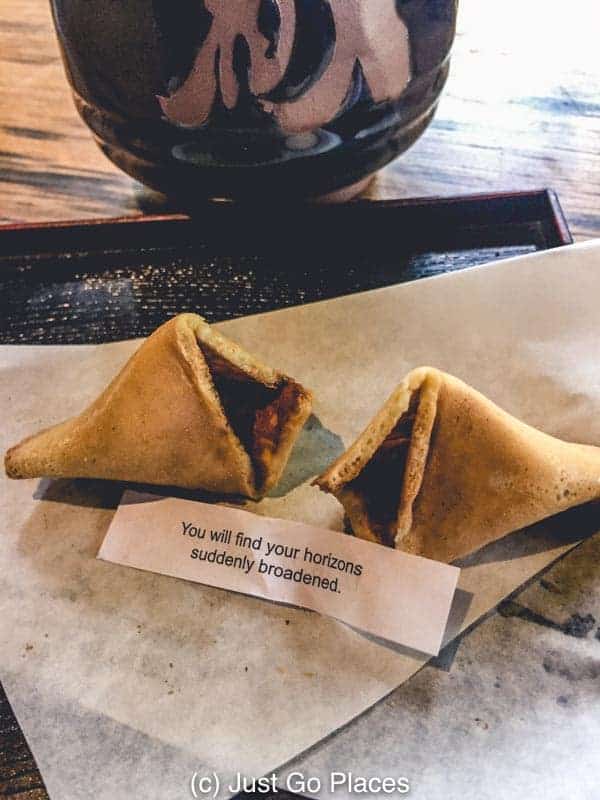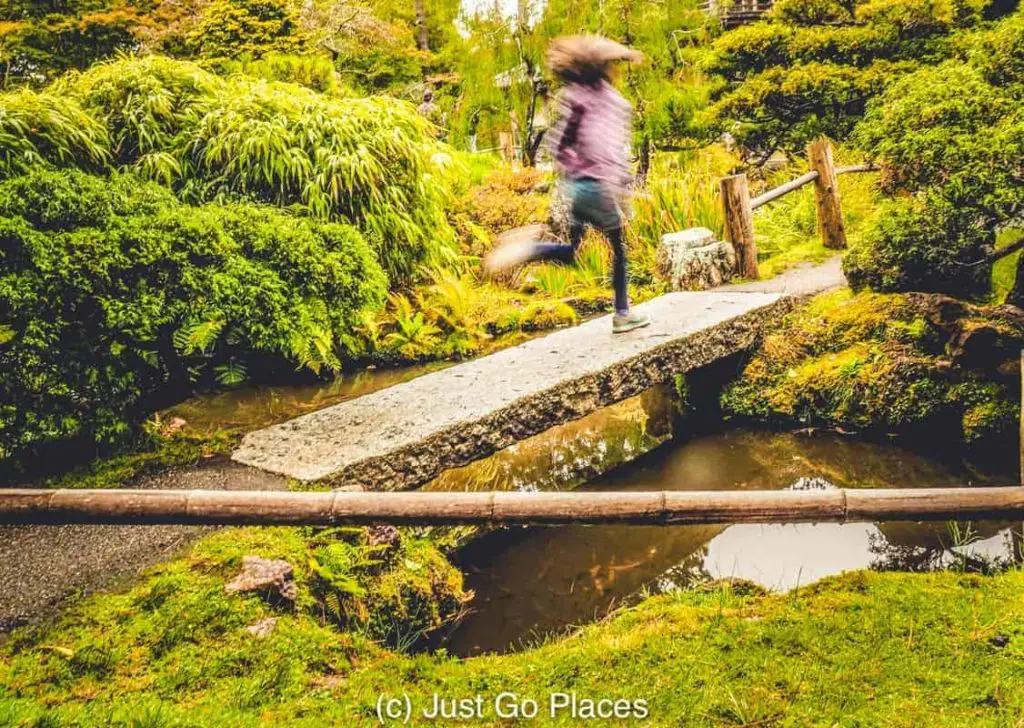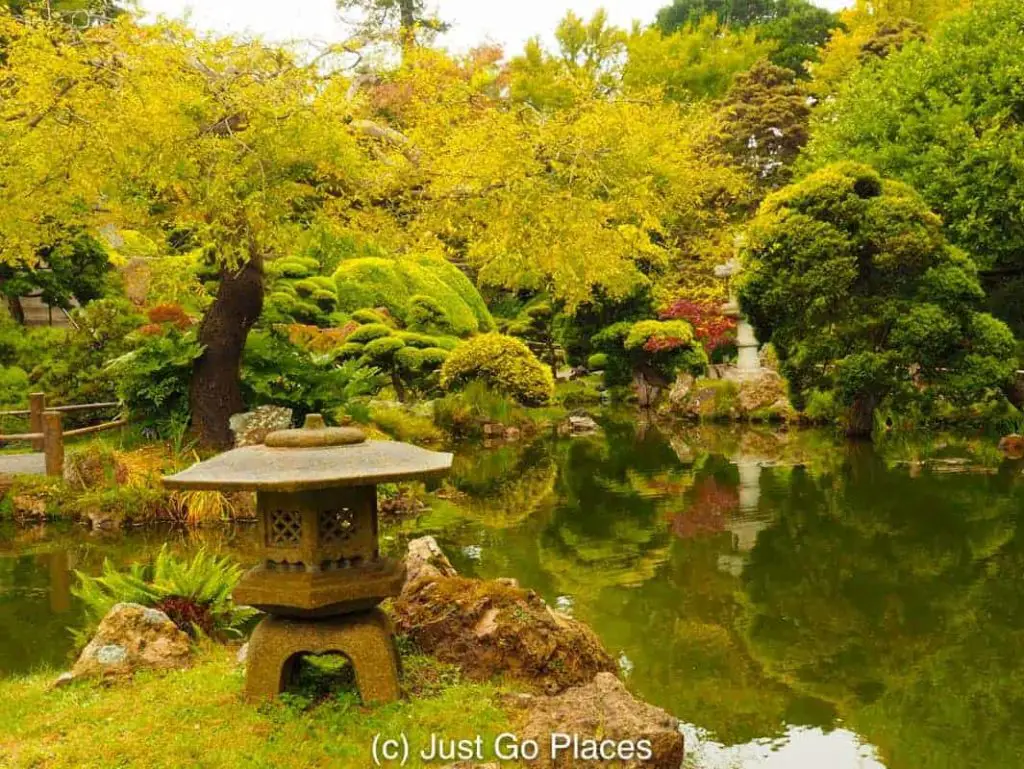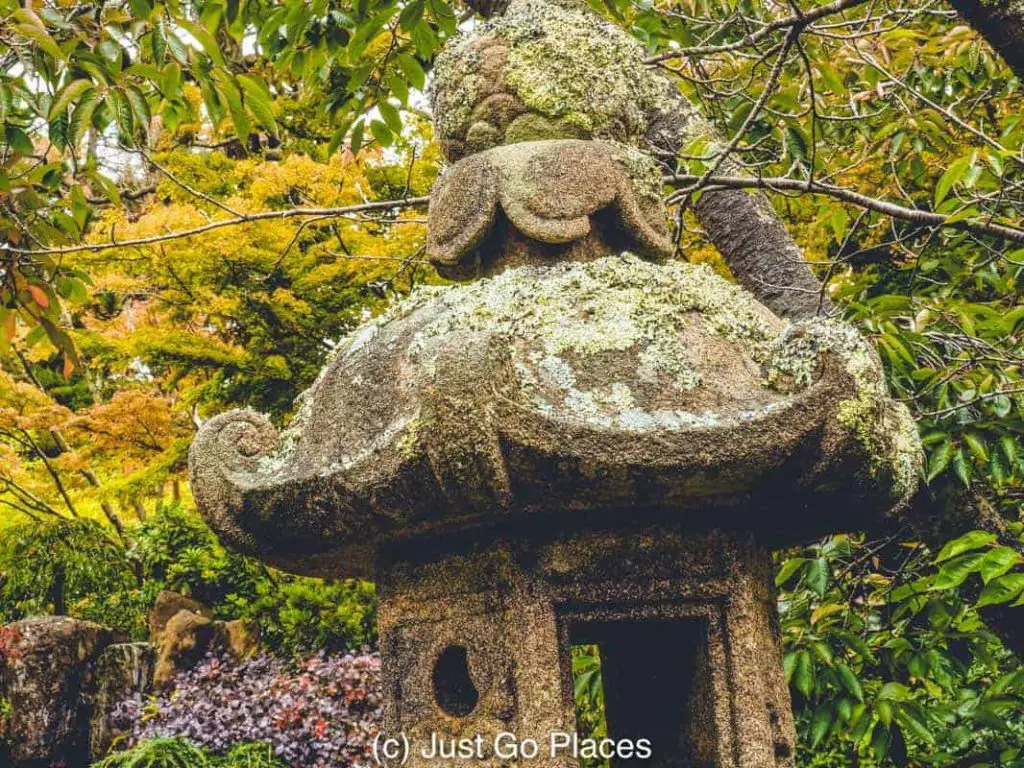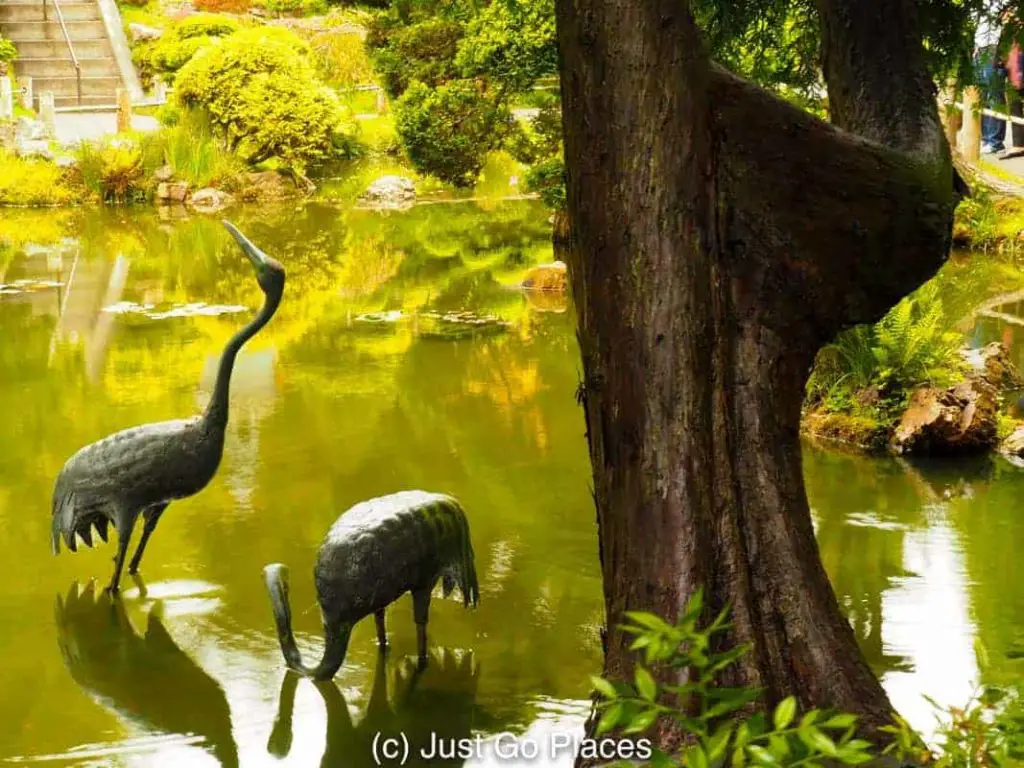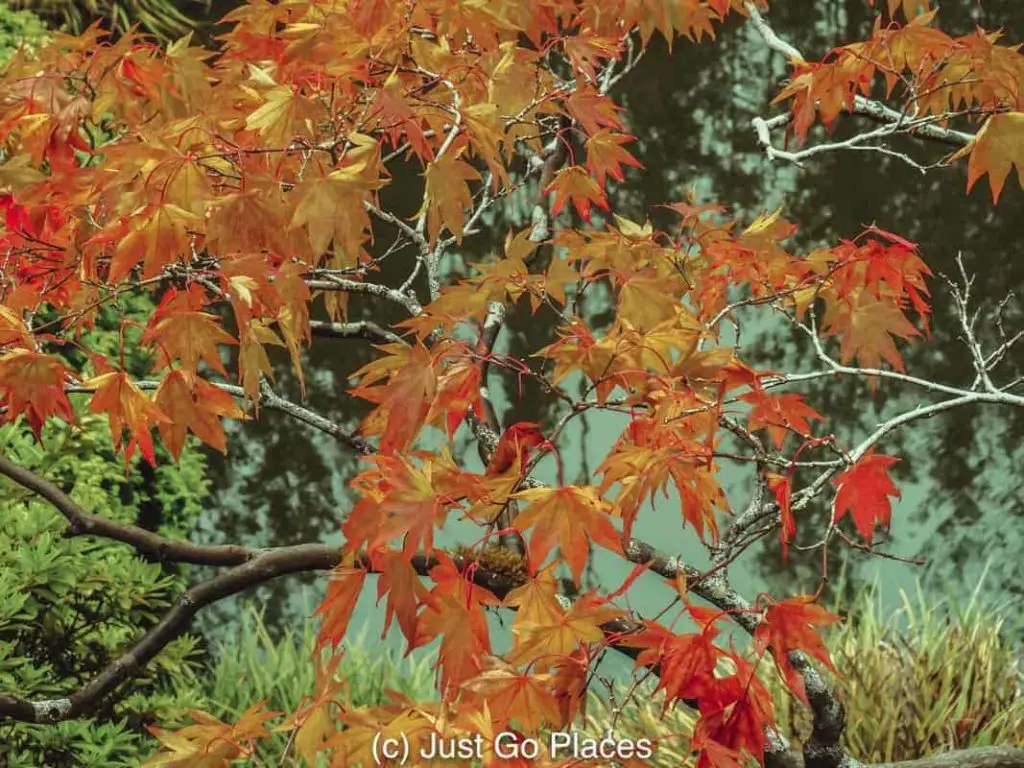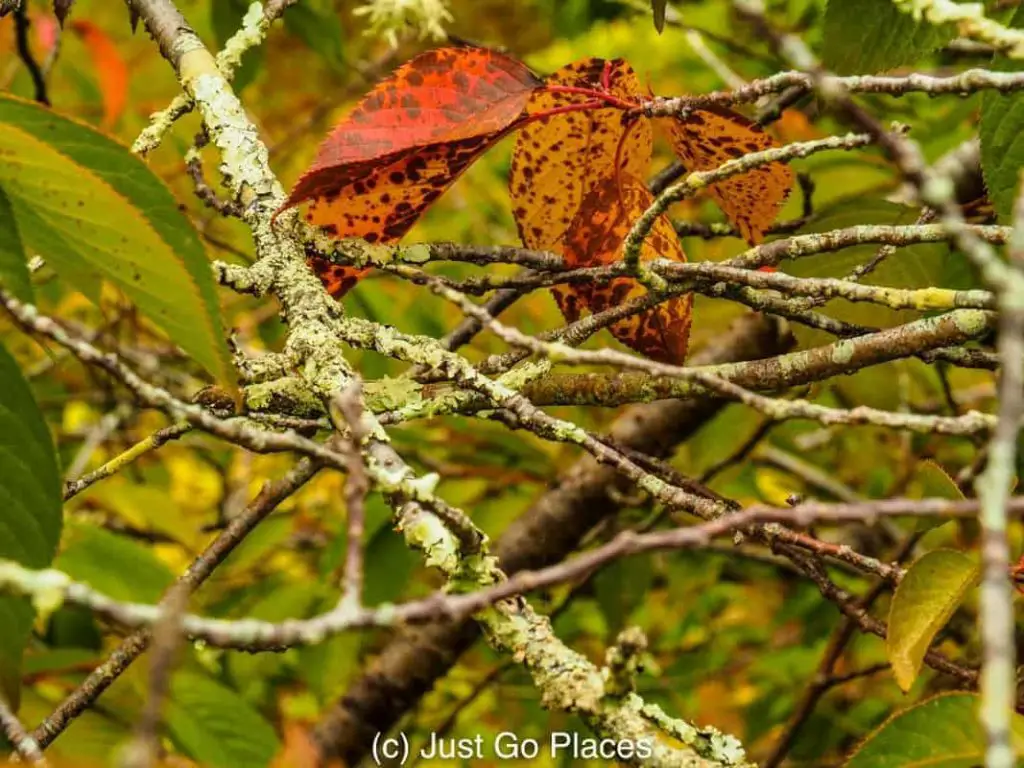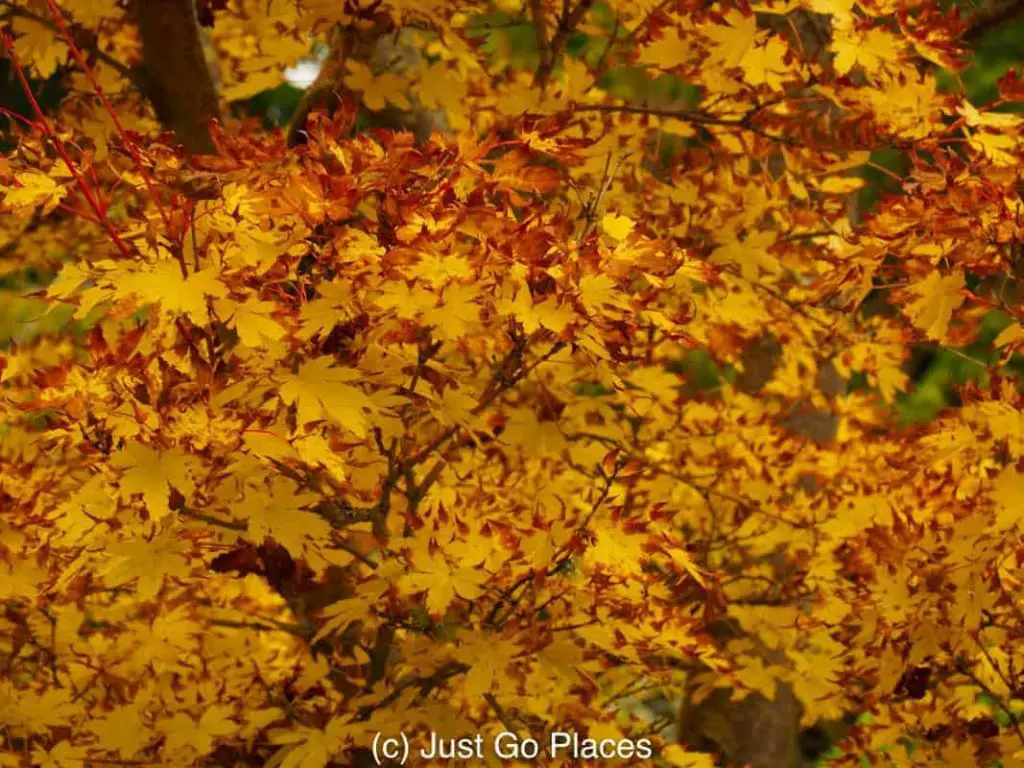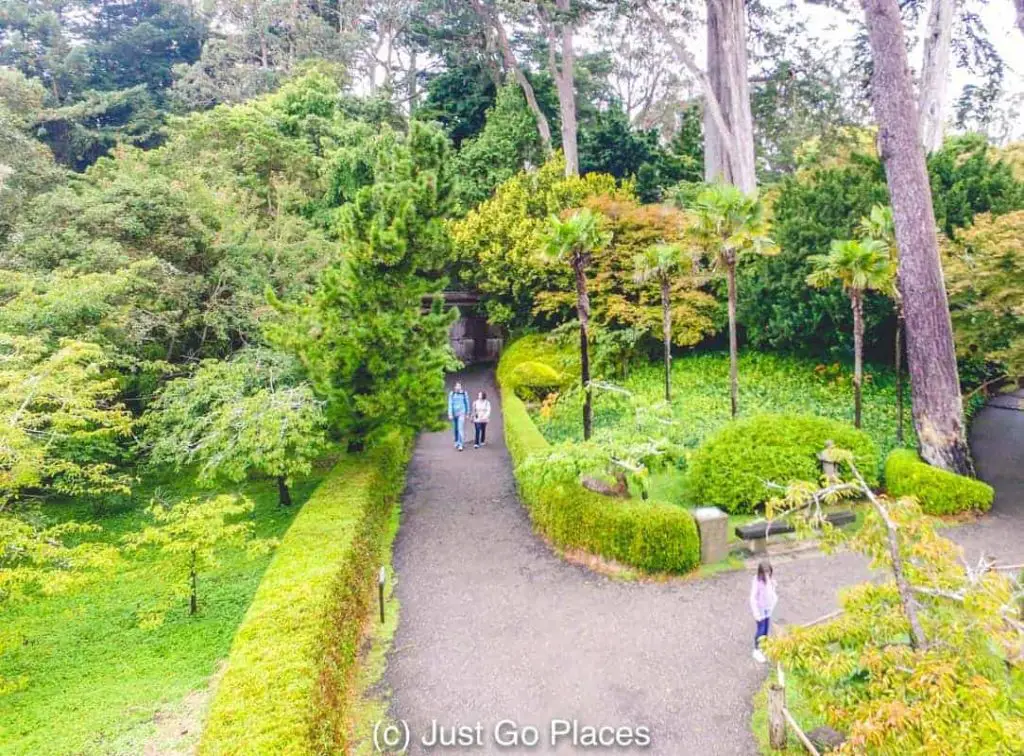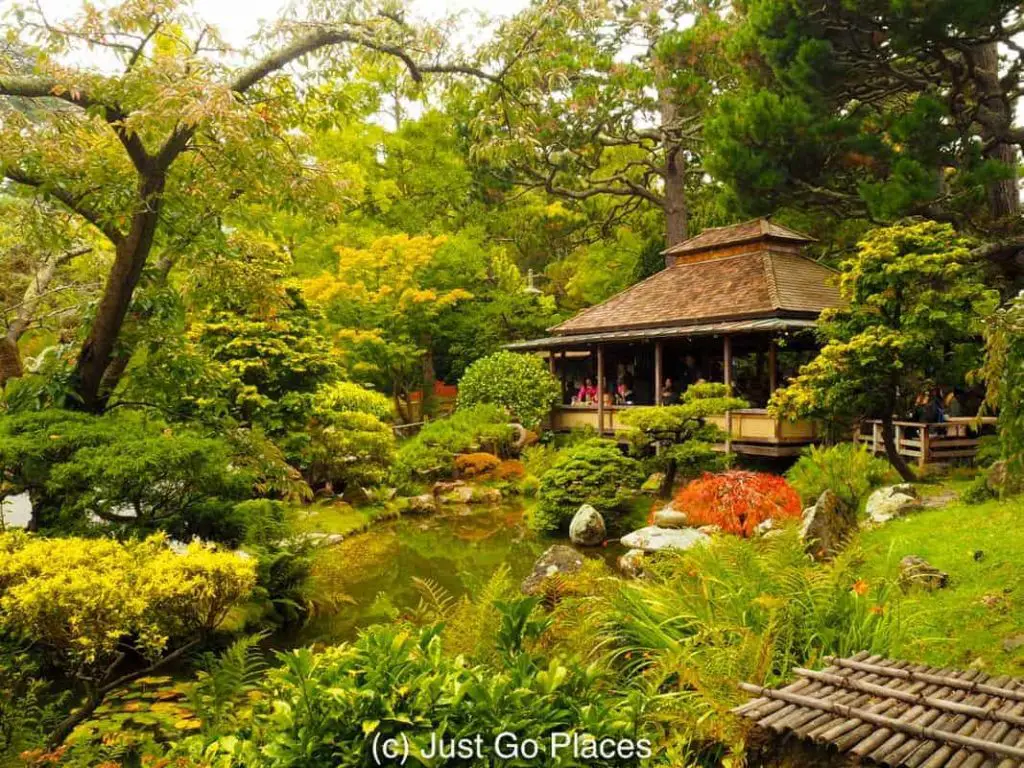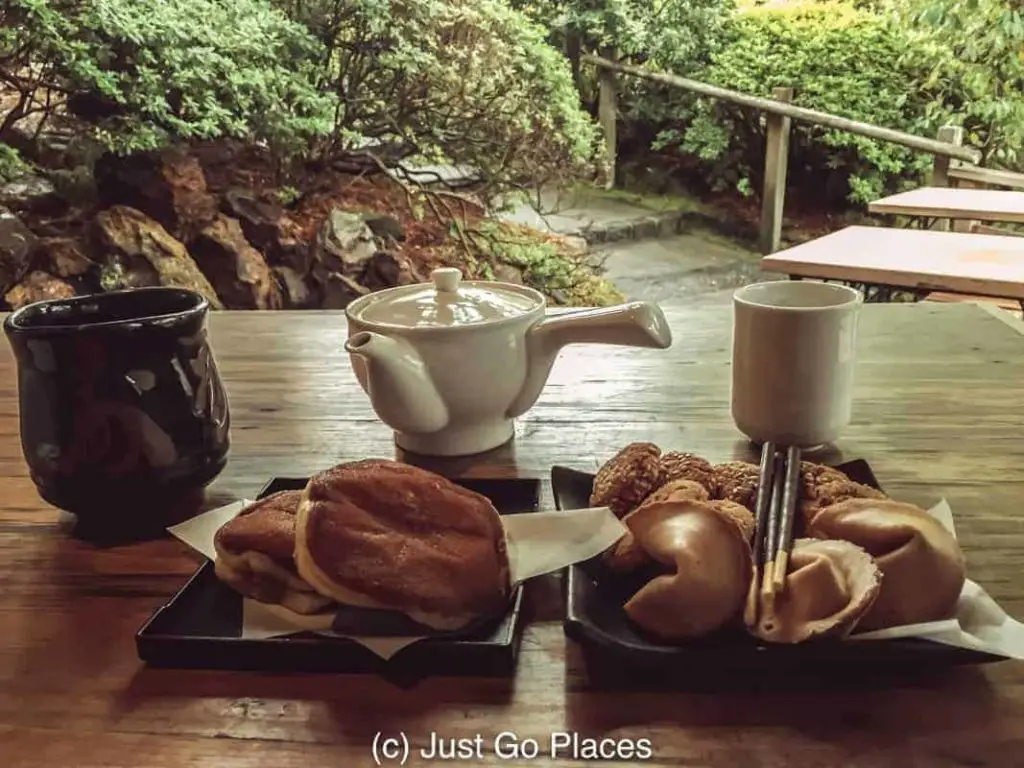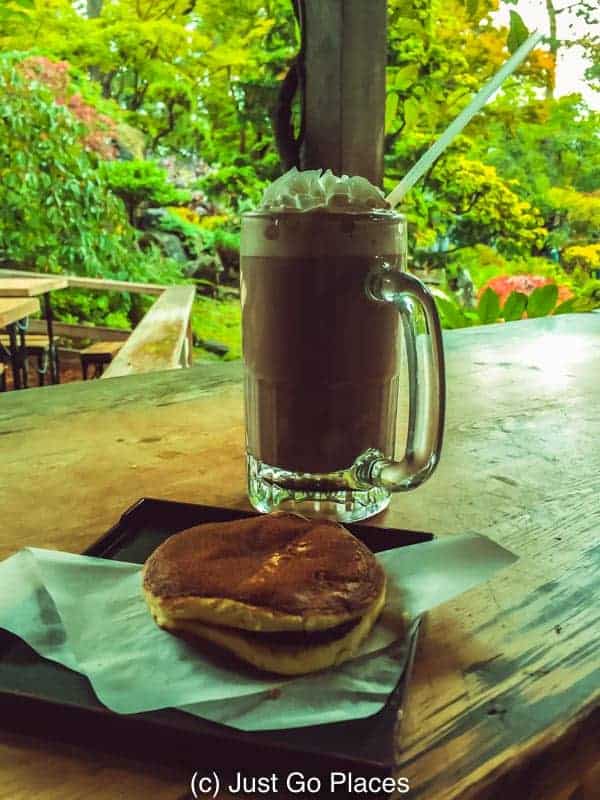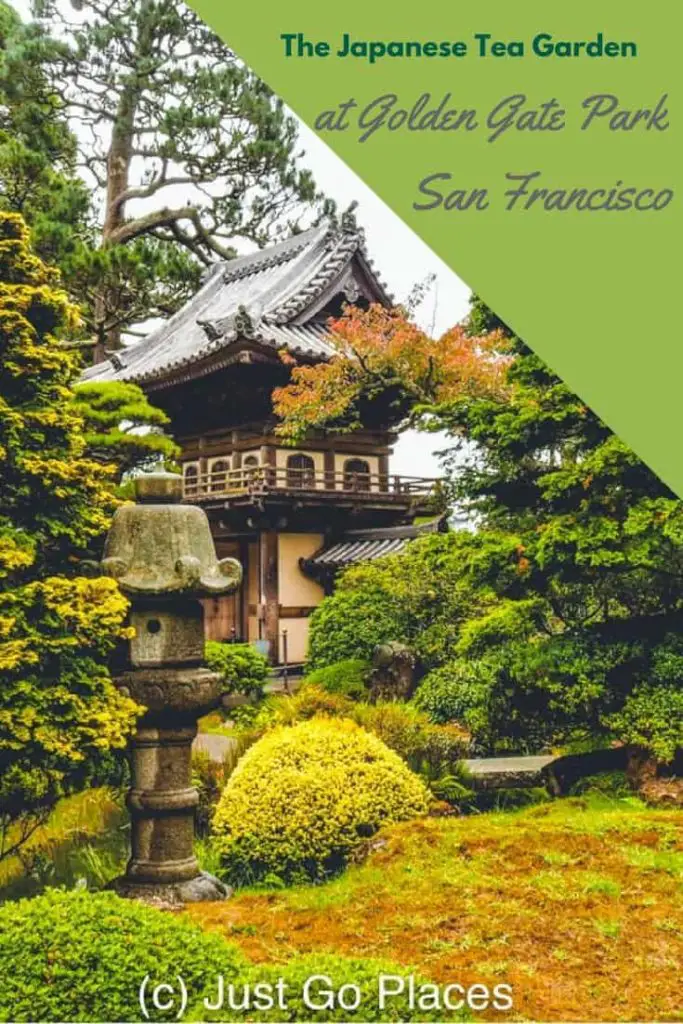Although it is only September, the mild chill of autumn is in the air in London. August in San Francisco felt the same way. Coming from a heat wave on the East Coast, we felt the nippy weather keenly. When we visited the Japanese Tea Garden in Golden Gate Park, the leaves were changing color. We saw the reality of autumn around the corner just as surely as we felt the coolness on our skin. A popular San Francisco attraction, the Japanese Tea Garden at Golden Gate Park is the oldest Japanese garden in the USA. We are Japanophiles so, of course, this Japanese Tea Garden was a must-see in San Francisco for us.
Contents
The Turbulent History of the Japanese Tea Garden
The Japanese Tea Garden started as part of an exhibit for the 1894 World’s Fair. After the World Fair ended, a wealthy local Japanese-American landscaper, Makoto Hagiwara, was allowed to create a permanent Japanese garden at the site.
Extending the garden to 5 acres, Hagiwara built a home and a Shinto shrine for himself and his family on the property. He was allowed to import thousands of cherry trees, plants and koi fish. The koi fish are still there and looking fat and happy.
His daughter and her family took over the family project until she was forcibly deported to a relocation camp in 1942 during the internment of Japanese Americans during World War II. Although the Hagiwaras had been promised a century lease at the Japanese Tea Garden, such agreements sank as steadily the American ships at Pearl Harbour.
Along with another 120,000 Japanese Americans, the Hagiwaras lost everything – their home, their garden, their possessions. As with other Japanese Americans who were interned during the war, they were never compensated for their losses either. Renamed the Oriental Tea Garden to be more Chinese, the garden fell into disrepair and planting died from neglect . Many of the items from the Japanese Tea Garden site disappeared. In 1952, the garden was reinstated as a Japanese Tea Garden.
The Invention of the Fortune Cookie
Along with so many other food myths I have discovered, I learned the truth about fortune cookies on this trip. It turns out that the fortune cookie that we associate with Chinese food was actually started at this Japanese Tea Garden. Makoto Hagiwara, served fortune cookies with his Japanese tea. They were supplied by another Japanese American company, Benkyodo, because fortune cookies were a regional Japanese delicacy. Hagiwara and Benkyodo created a vanilla flavour fortune cookies to appeal to Western tastes.
When Hagiwara’s family lost control of the Japanese Tea Garden during their internment, the garden was reshaped to evoke Chinese culture because of all the anti-Japanese feeling. Chinese businessmen took over the making of fortune cookies, started selling them to Chinese restaurants and the rest is history.
The Japanese Tea Garden
My family and I loved this tranquil garden. Possibly we were not so tranquil, but we appreciated the beauty of the garden nonetheless.
The winding paths are meant to slow people down so that they can appreciate nature. That clearly did not work for my children.
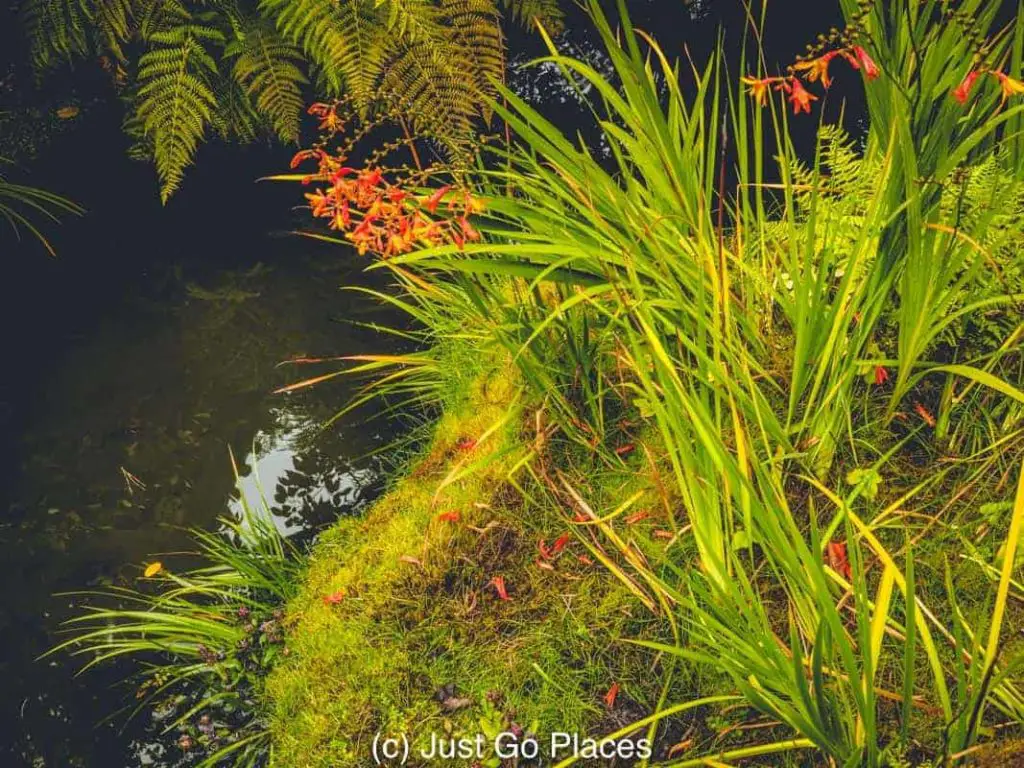
The Buddhist idea of Wabi-Sabi is about the perfection of imperfection. – orange petals floating away on the water.
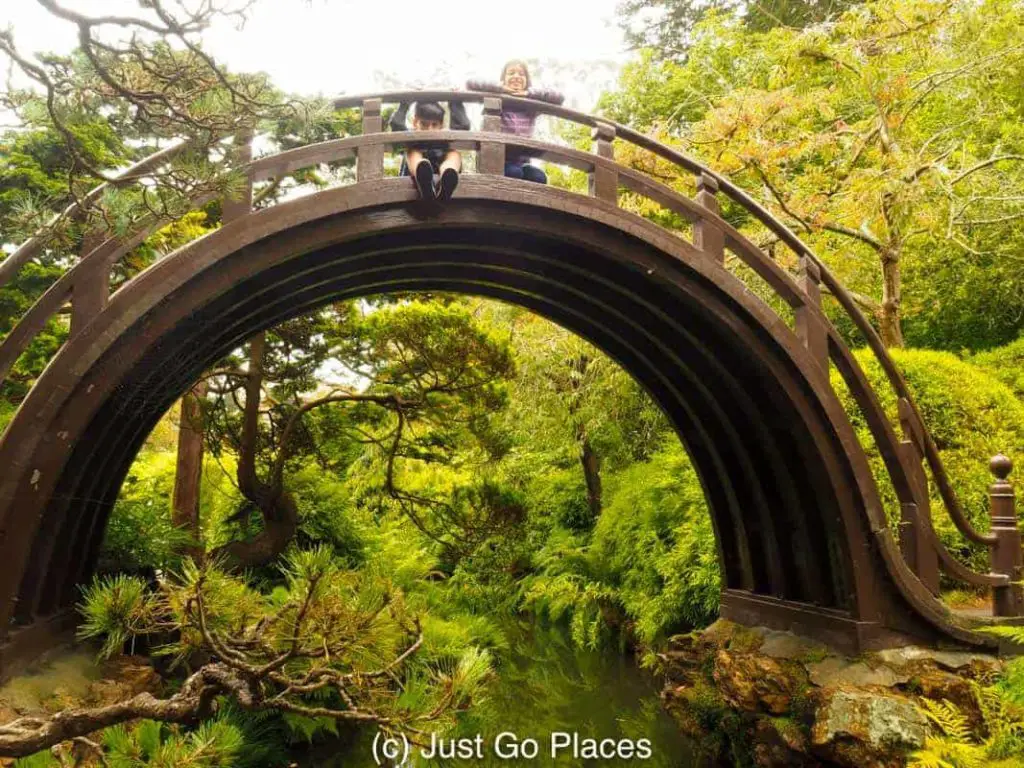
A drum bridge where you walk upright to cross it. It ives a perfect drum shape when you include the perfection in the water.
Tea at the Japanese Tea Garden
We, of course, stopped off for tea at the Japanese Tea Garden in Golden Gate Park. The nip in the air meant that something warm was necessary to keep our spirits up. The views are stunning as you sit and sip your tea.
My husband and I had the traditional Japanese tea, Matcha. The kids had hot chocolate which was served in giant cups. We also had traditional Japanese snacks dorayaki (a Japanese pancake filled with red bean paste), kuzumochi (flavoured rice cakes) and a cookie platter which, of course, had fortune cookies.
The Japanese Tea Garden serves tea, soft drinks and Japanese snacks. There are some small sandwiches. If your kids aren’t going to be happy with traditional Japanese food, then this tea house may not be the place for them.
Visiting the Japanese Tea Garden in Golden Gate Park
The Japanese Tea Garden in San Francisco is very easy to visit. There is ample parking available. Located at 75 Hagiwara Tea Drive, the Tea Garden is next door to the de Young museum in the park.
At least the Hagiwaras get name recognition in perpetuity even if they got pushed out early on their lease. It is open daily and there is free admission on certain days if you arrive early.
SPREAD THE WORD! PIN THIS TO YOUR TRAVEL PINTEREST BOARDS FOR FUTURE REFERENCE!
We did not receive compensation of any form, monetary or otherwise, from any of the products, services, hotels etc mentioned in this article.
This site generates income via partnerships with carefully-curated travel and lifestyle brands and/or purchases made through links to them at no extra cost to you. More information may be found on our Disclosure Policy.

